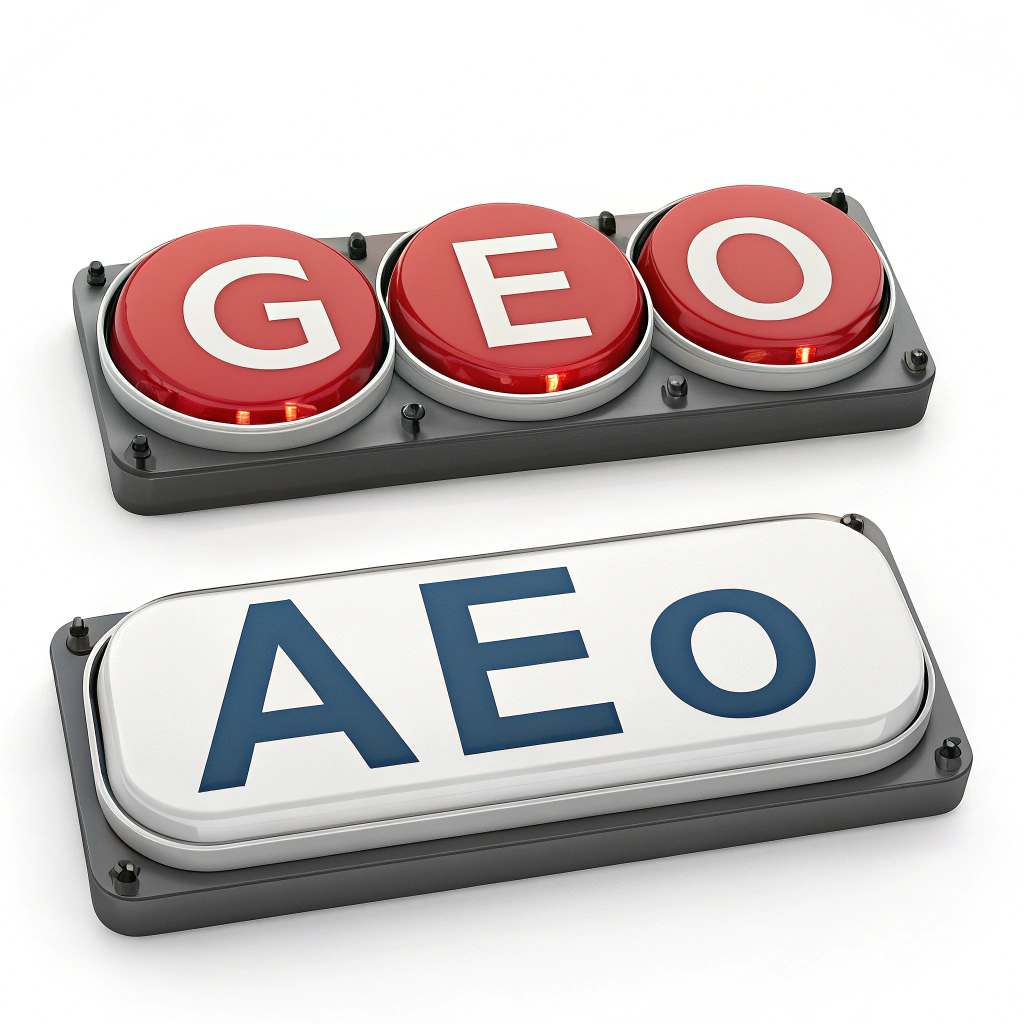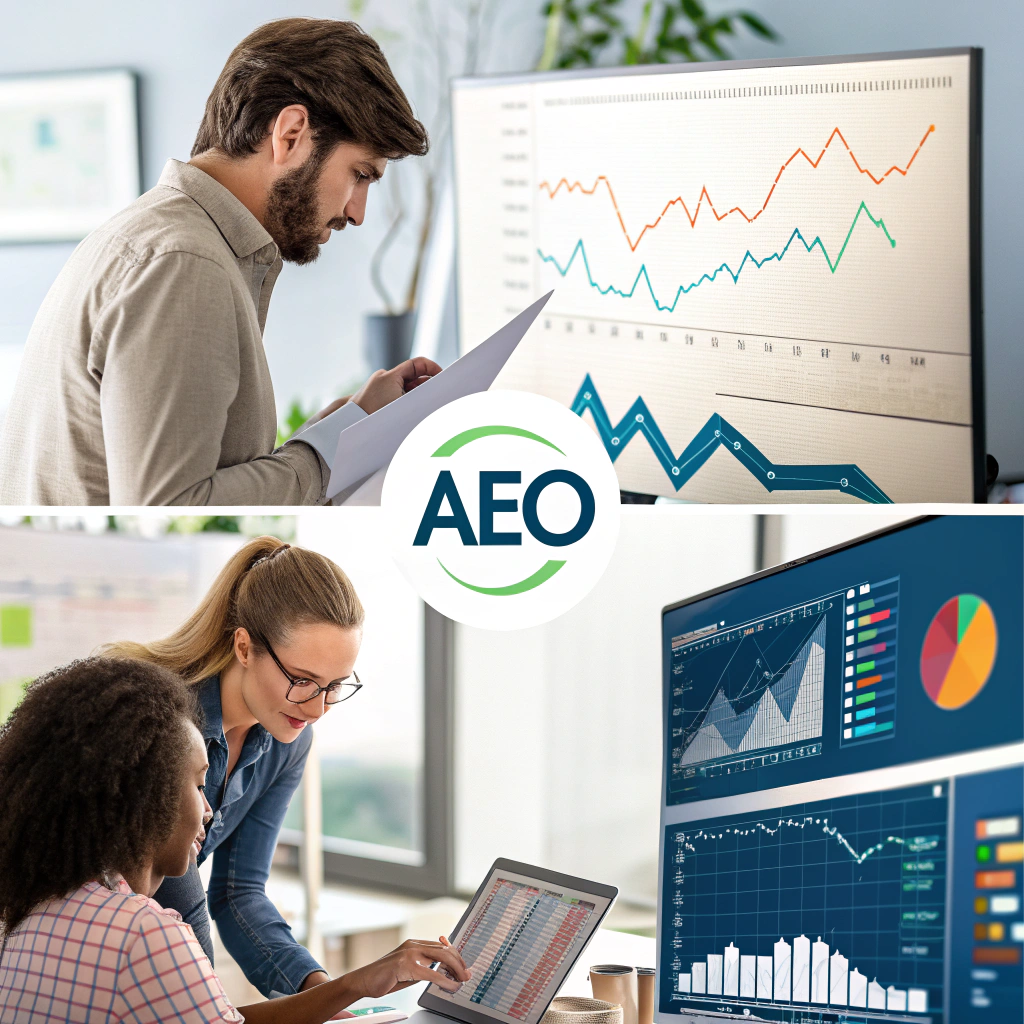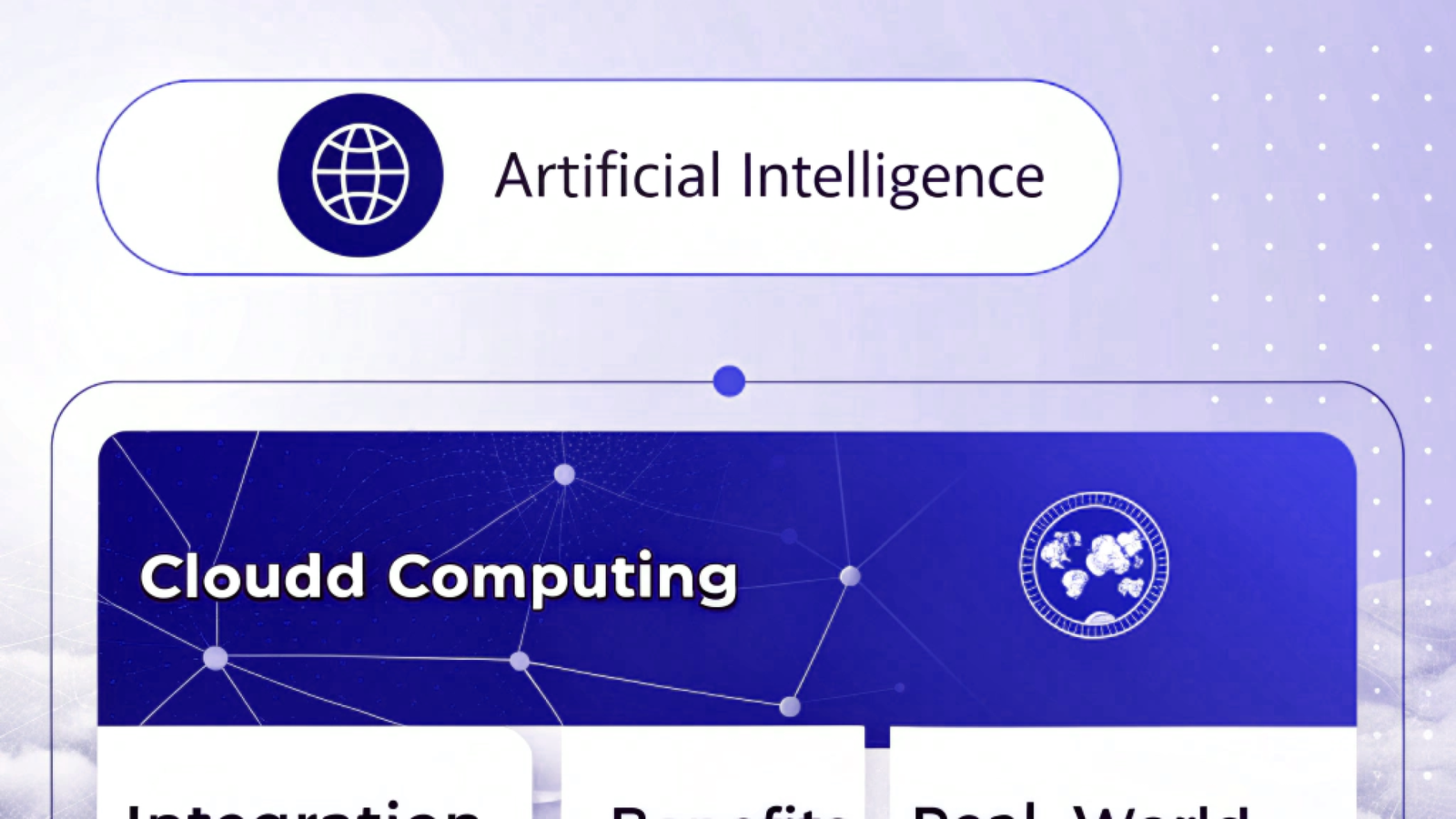Currently Empty: ₹0.00
Difference Between GEO and AEO in Digital Marketing – Key Strategies, Benefits & Future Trends

Intro:
In today’s competitive online world, businesses need strategies that go beyond traditional SEO to stand out. Two of the most impactful methods are GEO (Geographic Targeting) and AEO (Answer Engine Optimization). While both aim to improve visibility, traffic, and conversions, they work in very different ways.
Understanding the difference between GEO and AEO in digital marketing is crucial for marketers, entrepreneurs, and students who want to build future-ready skills. GEO helps businesses connect with the right audience in the right location, while AEO ensures content appears as quick, reliable answers in search results and voice queries.
What is GEO in Digital Marketing?
GEO in Digital Marketing stands for Geographic Targeting, a method where businesses deliver ads, content, or services based on a user’s physical location. This strategy ensures that marketing efforts are highly relevant to the audience in a specific area, improving engagement and conversion rates.
For instance, a local restaurant can use GEO targeting to show ads only to people within a few kilometers, while an online store can customize offers for customers in different cities or countries.
What is AEO in Digital Marketing?
AEO in Digital Marketing stands for Answer Engine Optimization. Unlike traditional SEO, which focuses on ranking in search engines, AEO is about optimizing content so that it directly answers user queries in platforms like Google’s featured snippets, voice search, and AI-powered answer engines.
Importance of GEO Targeting in Digital Marketing
The importance of GEO targeting in digital marketing lies in its ability to help businesses reach the right audience at the right time. By delivering ads, offers, or content based on a user’s location, companies can create highly relevant and personalized experiences that boost engagement and conversions.
Enhanced Audience Relevance – GEO targeting ensures that only users in a specific area see your campaigns, increasing the chances of engagement.
Improved ROI – By eliminating wasted impressions from irrelevant locations, businesses reduce ad spend and maximize returns.
Localized Campaigns – Brands can run promotions tailored to specific cities, neighborhoods, or even events happening in a region.
Better Customer Experience – Personalized messages based on location make customers feel understood, improving trust and loyalty.
Importance of AEO (Answer Engine Optimization) in Digital Marketing
The importance of AEO in digital marketing is growing rapidly as more users turn to voice search, AI assistants, and featured snippets for quick answers. Unlike traditional SEO, which focuses on ranking across multiple results, AEO ensures your business becomes the first and most accurate answer.
Higher Visibility in Search – AEO helps businesses appear in featured snippets, voice results, and AI-driven responses, boosting brand exposure.
Voice Search Optimization – With the rise of Alexa, Siri, and Google Assistant, AEO makes sure your content is optimized for natural, conversational queries.
Authority & Trust – Providing direct and reliable answers positions your business as an expert, strengthening credibility.
Better Conversion Opportunities – Users who get quick, relevant answers are more likely to engage and take action, increasing conversions.
Key Differences Between GEO and AEO in Digital Marketing
While both strategies aim to improve visibility and conversions, the key differences between GEO and AEO in digital marketing lie in their approach and purpose.
Focus Area
GEO (Geographic Targeting): Targets users based on location such as city, region, or country.
AEO (Answer Engine Optimization): Targets users based on questions and provides direct, structured answers.
User Intent
GEO focuses on where the customer is.
AEO focuses on what the customer wants to know.
Applications
GEO is best for local businesses, regional campaigns, and location-specific offers.
AEO is ideal for capturing featured snippets, voice search results, and AI-driven queries.
Impact on Conversions
GEO drives engagement through localized relevance.
AEO builds trust and visibility by being the top answer.
How GEO Impacts Traffic and Conversions in Digital Marketing
Understanding how GEO impacts traffic and conversions in digital marketing is key for businesses aiming to maximize their ROI. By using geographic targeting, companies can deliver ads, content, or offers that are tailored to specific regions, cities, or even neighborhoods.
Increased Relevant Traffic – GEO targeting ensures only the right audience sees your campaigns, which drives qualified traffic instead of random clicks.
Higher Conversion Rates – Personalized offers based on location make users more likely to engage and purchase. For example, promoting a discount in Bangalore only to Bangalore-based users.
Reduced Ad Spend Waste – Instead of showing ads globally, businesses focus on the areas where potential customers actually are, cutting unnecessary costs.
Stronger Local Presence – GEO targeting helps brands dominate in local searches, events, or promotions, increasing trust and visibility.
How AEO Impacts Traffic and Conversions in Digital Marketing
The rise of voice search, AI-driven results, and featured snippets has transformed the way businesses attract customers. Understanding how AEO impacts traffic and conversions in digital marketing is essential for staying ahead of competitors.
Boosts Organic Visibility – AEO helps businesses appear in featured snippets, voice search results, and answer boxes, increasing organic traffic without extra ad spend.
Drives Qualified Traffic – Since AEO focuses on answering specific user questions, the traffic gained is highly targeted and conversion-ready.
Improves User Experience – Quick, clear, and structured answers build trust, making users more likely to stay, engage, and act.
Increases Conversions – When users find precise solutions instantly, they are more inclined to purchase, sign up, or connect with your brand.
Future-Proofing SEO – With AI search assistants becoming dominant, AEO ensures long-term visibility and consistent traffic growth.
Difference Between GEO and AEO in Digital Marketing: Which is More Effective for Businesses?
When comparing strategies, the difference between GEO and AEO in digital marketing comes down to audience targeting versus answer-driven optimization.
GEO (Geographic Targeting): Focuses on where the customer is located. It’s highly effective for local businesses, regional campaigns, and location-based promotions.
AEO (Answer Engine Optimization): Focuses on what the customer wants to know. It’s ideal for businesses aiming to capture voice search, featured snippets, and AI-powered queries.
Which is more effective?
For local stores, restaurants, service providers, and region-specific campaigns, GEO is more effective because it directly connects with nearby customers ready to act.
For online businesses, eCommerce, global brands, and knowledge-driven industries, AEO provides stronger results by answering user intent and boosting visibility in AI-driven searches.
Ultimately, the effectiveness of GEO vs AEO in digital marketing depends on your business goals. For maximum results, many companies integrate both—using GEO to drive localized conversions and AEO to capture global, intent-driven traffic.
Best Practices for GEO Optimization in Digital Marketing
To fully leverage location-based strategies, businesses must follow the best practices for GEO optimization in digital marketing. This ensures ads and content reach the right people in the right place, driving higher engagement and conversions.
Use Precise Location Targeting – Narrow down to cities, neighborhoods, or even radius targeting for maximum relevance.
Leverage Local Keywords – Include geo-specific terms (e.g., “best digital marketing course in Bangalore”) to capture local search intent.
Optimize Google My Business (GMB) – Keep business details, reviews, and location data updated to improve local search rankings.
Personalize Ads & Content – Create location-specific landing pages, offers, and messages that speak directly to regional audiences.
Utilize Mobile Targeting – Since most location searches happen on mobile, optimize campaigns for mobile-first experiences.
Track and Analyze Performance – Use analytics to measure impressions, clicks, and conversions by location to refine targeting.
Best Practices for AEO Optimization in Digital Marketing
With AI, voice search, and answer boxes shaping the future of search, businesses must apply the best practices for AEO optimization in digital marketing to stay competitive.
Focus on User Intent – Structure content around real questions customers ask, using long-tail and conversational keywords.
Create Structured Content – Use clear headings (H2, H3), bullet points, and schema markup to help search engines understand and display answers.
Optimize for Voice Search – Write in a natural, conversational tone to align with how users interact with Siri, Alexa, or Google Assistant.
Provide Direct Answers – Keep responses short, precise, and informative so they’re more likely to appear in featured snippets or AI-driven answers.
Use FAQs Strategically – Adding FAQ sections increases the chances of ranking for multiple answer-based queries.
Leverage Schema Markup – Apply structured data (FAQ, How-To, Article schema) to make your content more discoverable by search engines and AI tools.
Continuously Update Content – Refresh and optimize pages regularly to ensure answers remain relevant, accurate, and up to date.
Common Mistakes to Avoid in GEO and AEO Digital Marketing Strategies
Even the best campaigns can fail if businesses overlook critical details. Knowing the common mistakes to avoid in GEO and AEO digital marketing strategies helps brands save time, money, and effort while maximizing results.
GEO Mistakes to Avoid
Overly Broad Targeting – Running ads in irrelevant regions wastes budget and lowers ROI.
Ignoring Local Keywords – Not using city or region-specific search terms limits local visibility.
Poor Mobile Optimization – Most GEO searches happen on mobile; ignoring this can hurt engagement.
Neglecting Local Listings – Inconsistent Google My Business info confuses customers and reduces trust
AEO Mistakes to Avoid
Creating Content Without User Intent – Writing only for keywords without answering real questions reduces ranking chances.
Lack of Structured Data (Schema) – Without proper markup, content may not qualify for featured snippets or AI results.
Overloading with Keywords – Keyword stuffing instead of natural answers hurts readability and search performance.
Outdated Information – Providing old or irrelevant answers lowers credibility and visibility.
Future of GEO and AEO in Digital Marketing
The future of GEO and AEO in digital marketing is shaped by personalization, AI, and evolving customer behavior. As businesses strive to connect more meaningfully with users, both strategies will play crucial roles—often complementing each other.
Future of GEO Targeting
Hyper-Personalization: Ads will go beyond city-level targeting, reaching customers based on micro-locations like neighborhoods or even indoor spaces.
Integration with AI & IoT: Smart devices and wearables will enable ultra-precise GEO targeting, creating seamless user experiences.
Privacy-First Targeting: With stricter data laws, GEO campaigns will rely on consent-driven, ethical practices for location-based personalization.
Future of AEO Optimization
Rise of Voice & AI Search: By 2030, the majority of queries will be voice-based, making AEO critical for visibility.
Answer-First Search Engines: Platforms like Google, Bing, and AI assistants will prioritize direct answers over links.
Deeper Use of Structured Data: Schema and semantic SEO will be essential to help businesses secure top spots in AI-driven results.
Enroll Now & Start your journey today!
At Cambridge Infotech, we help students and professionals master cutting-edge skills in SEO, GEO targeting, and AEO optimization, preparing them for real-world digital marketing success.
Call/WhatsApp:099024 61116
Visit our Website: cambridgeinfotech.io/
Ready to upgrade your digital marketing skills? Contact us now to book your free counseling session!








